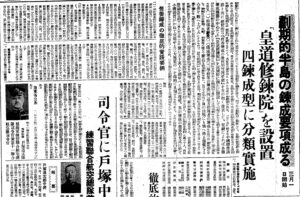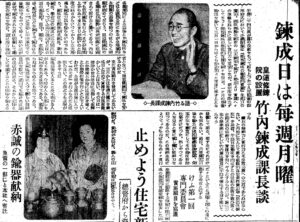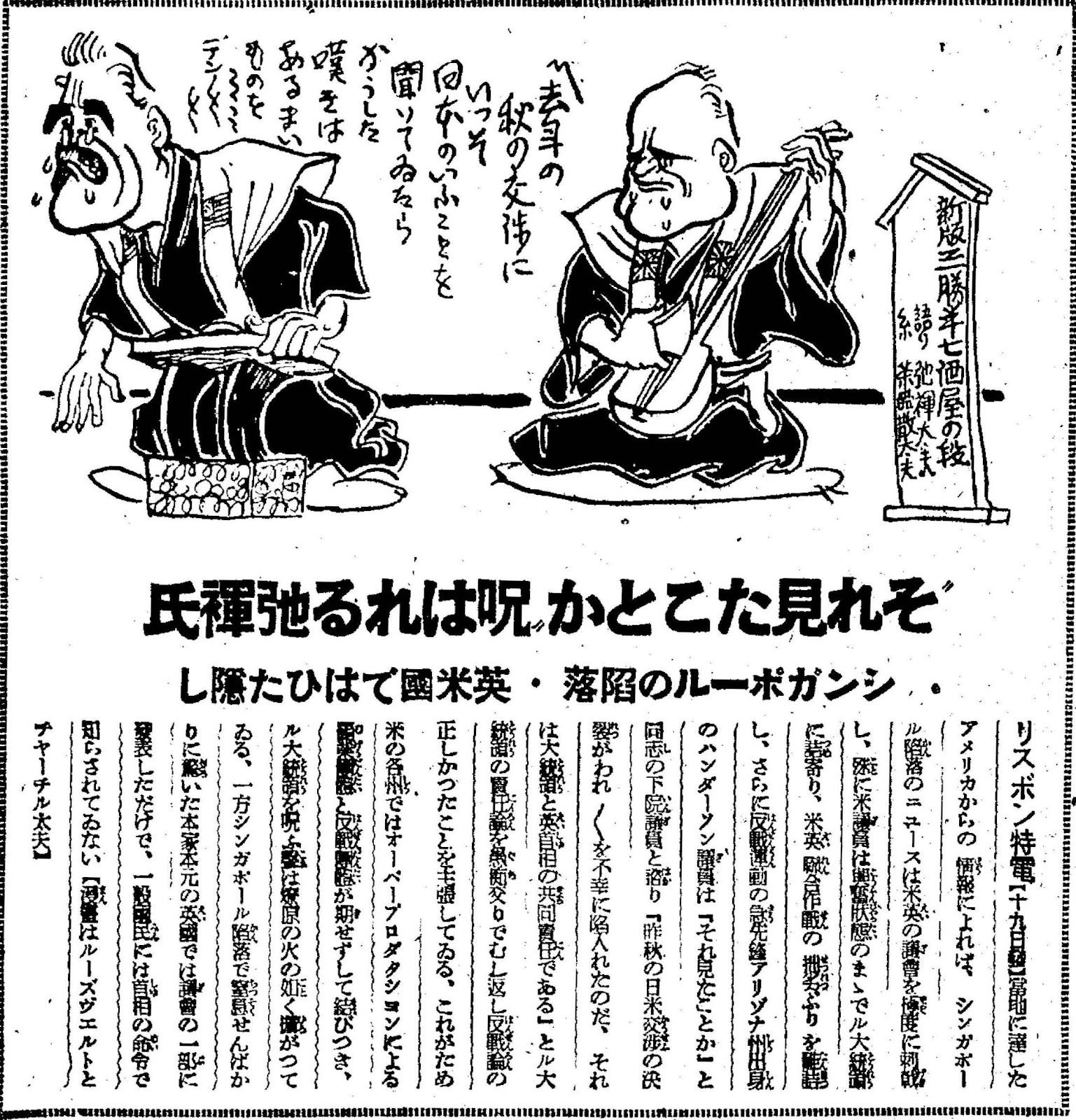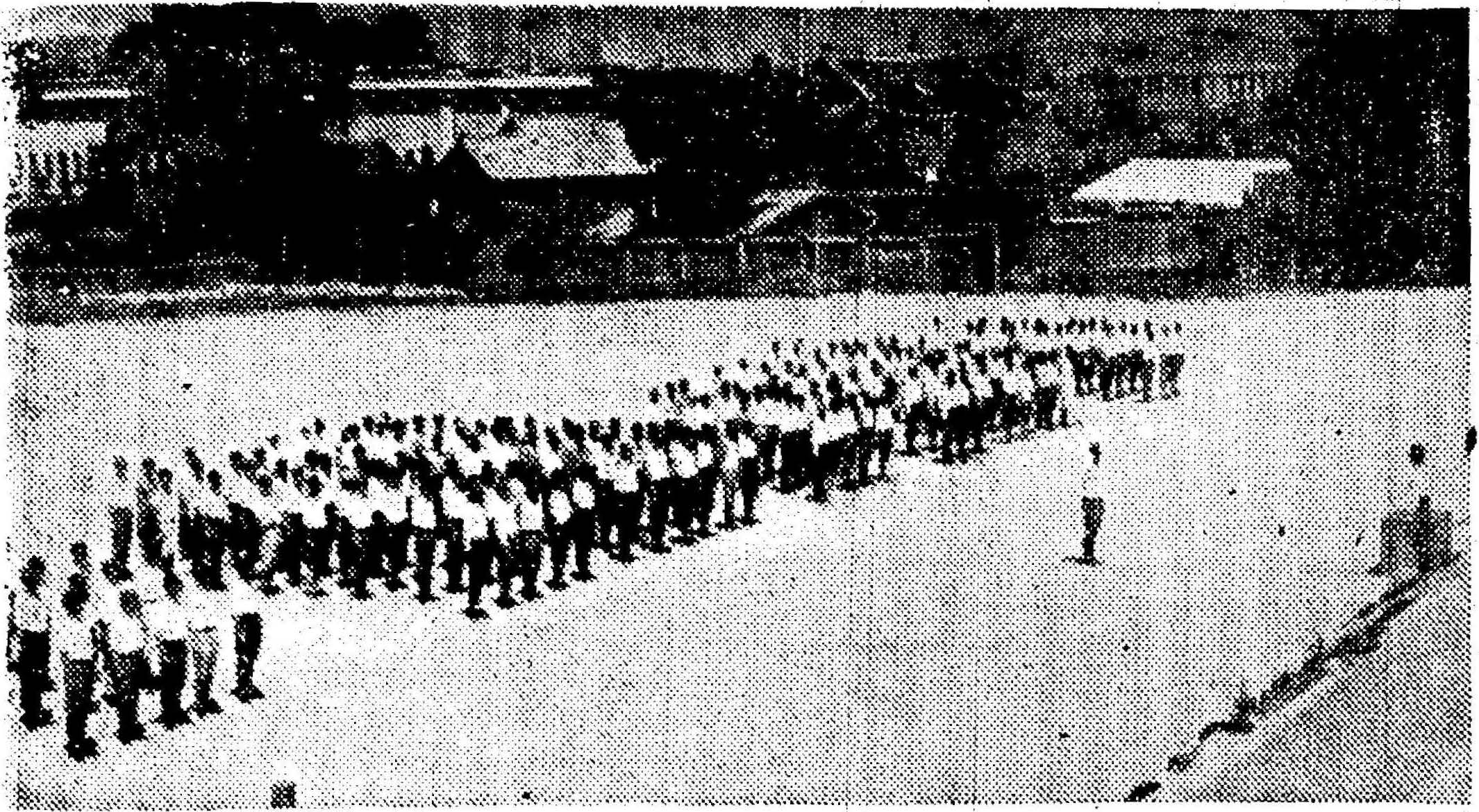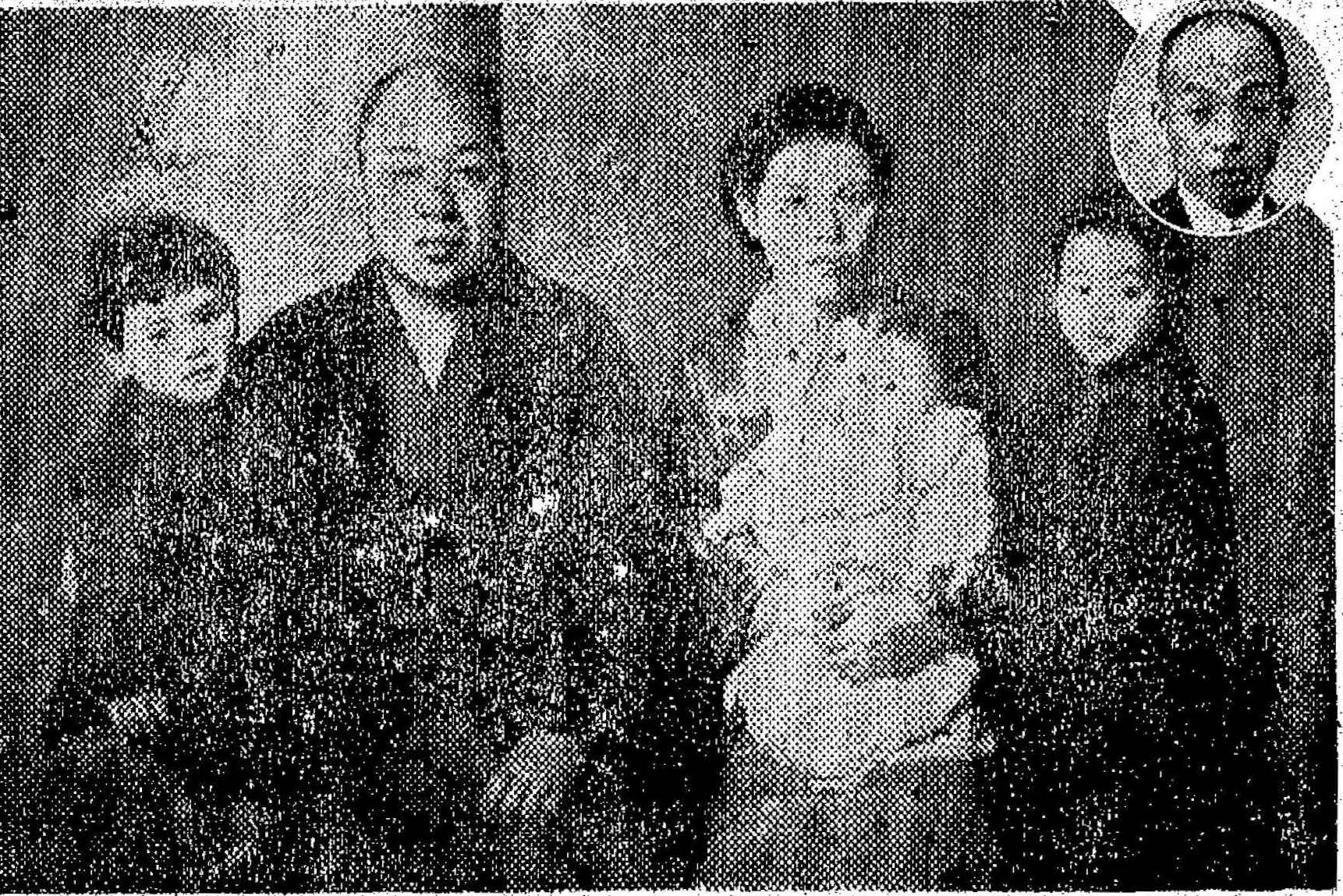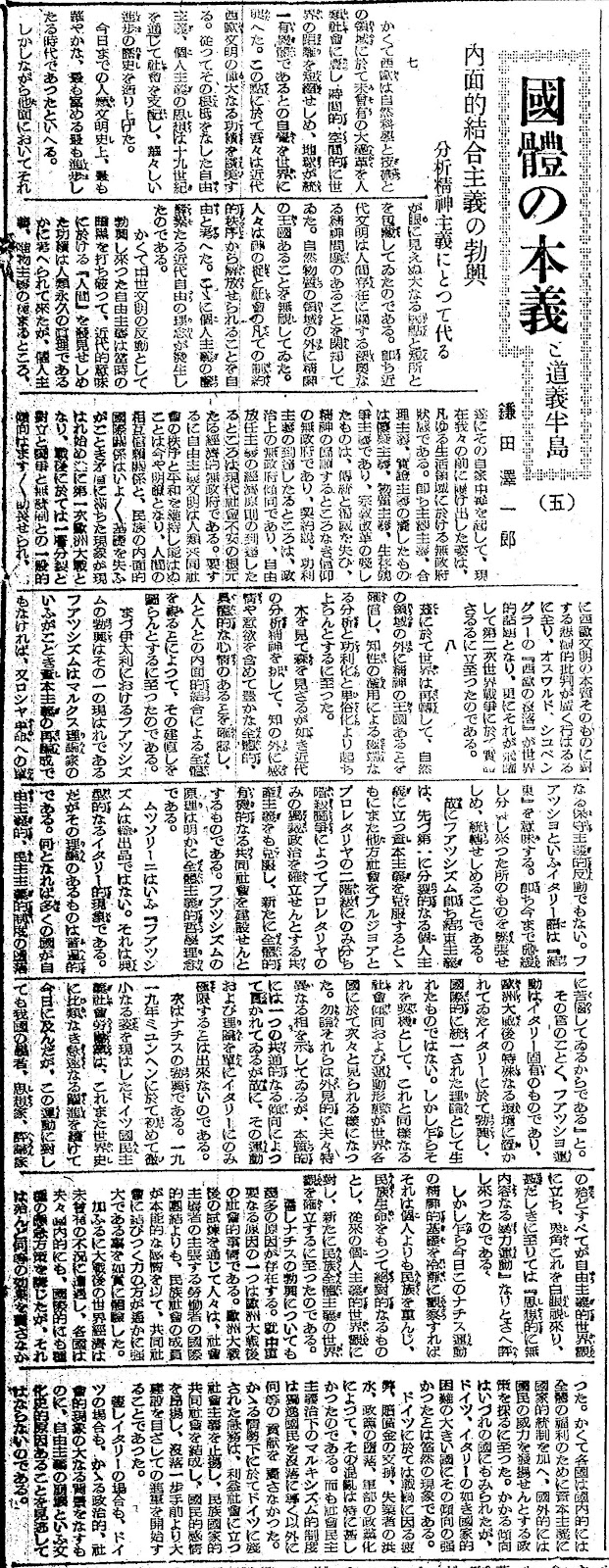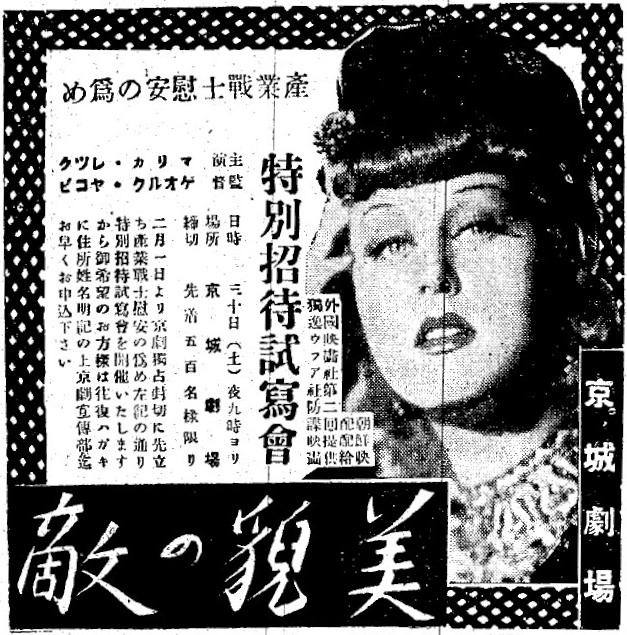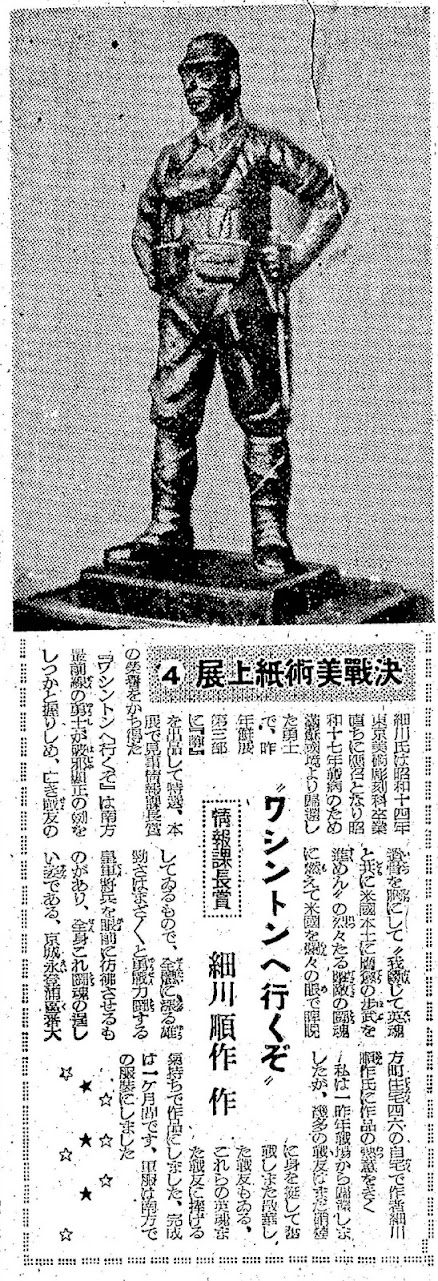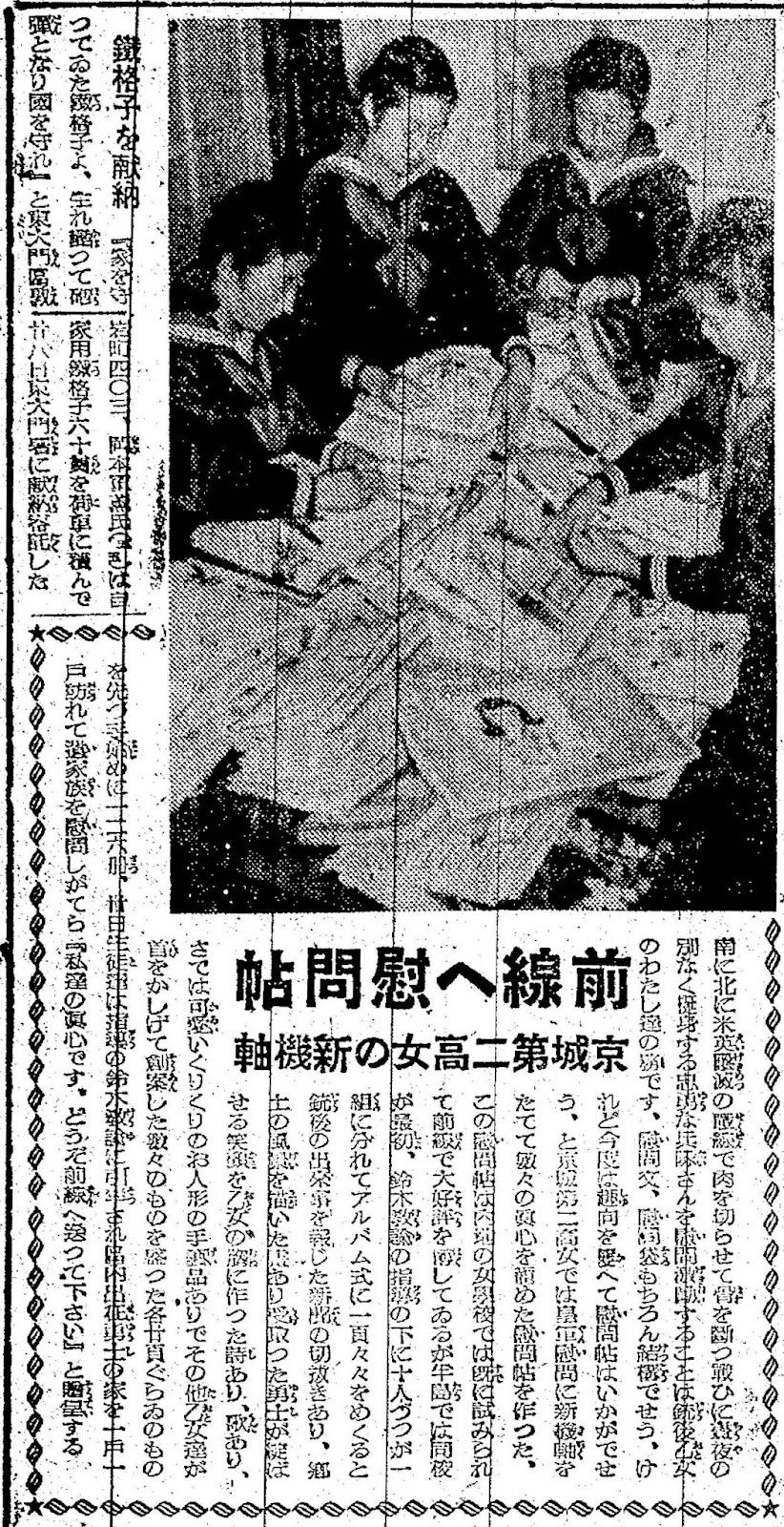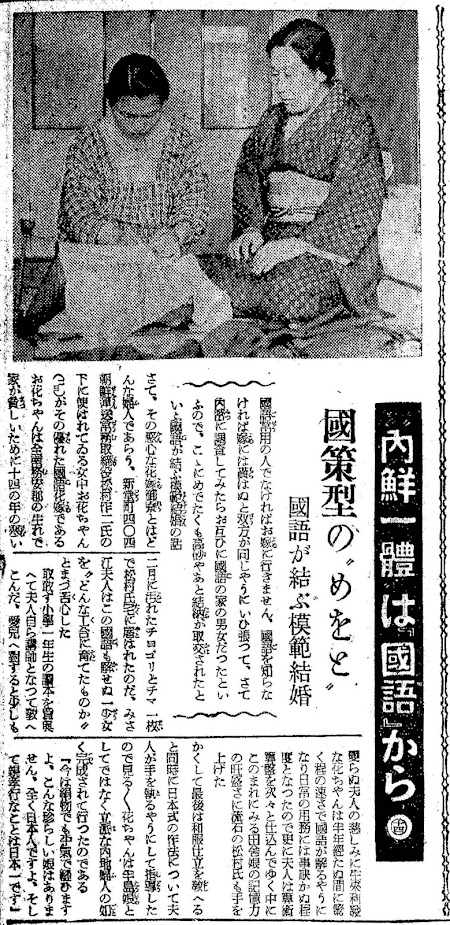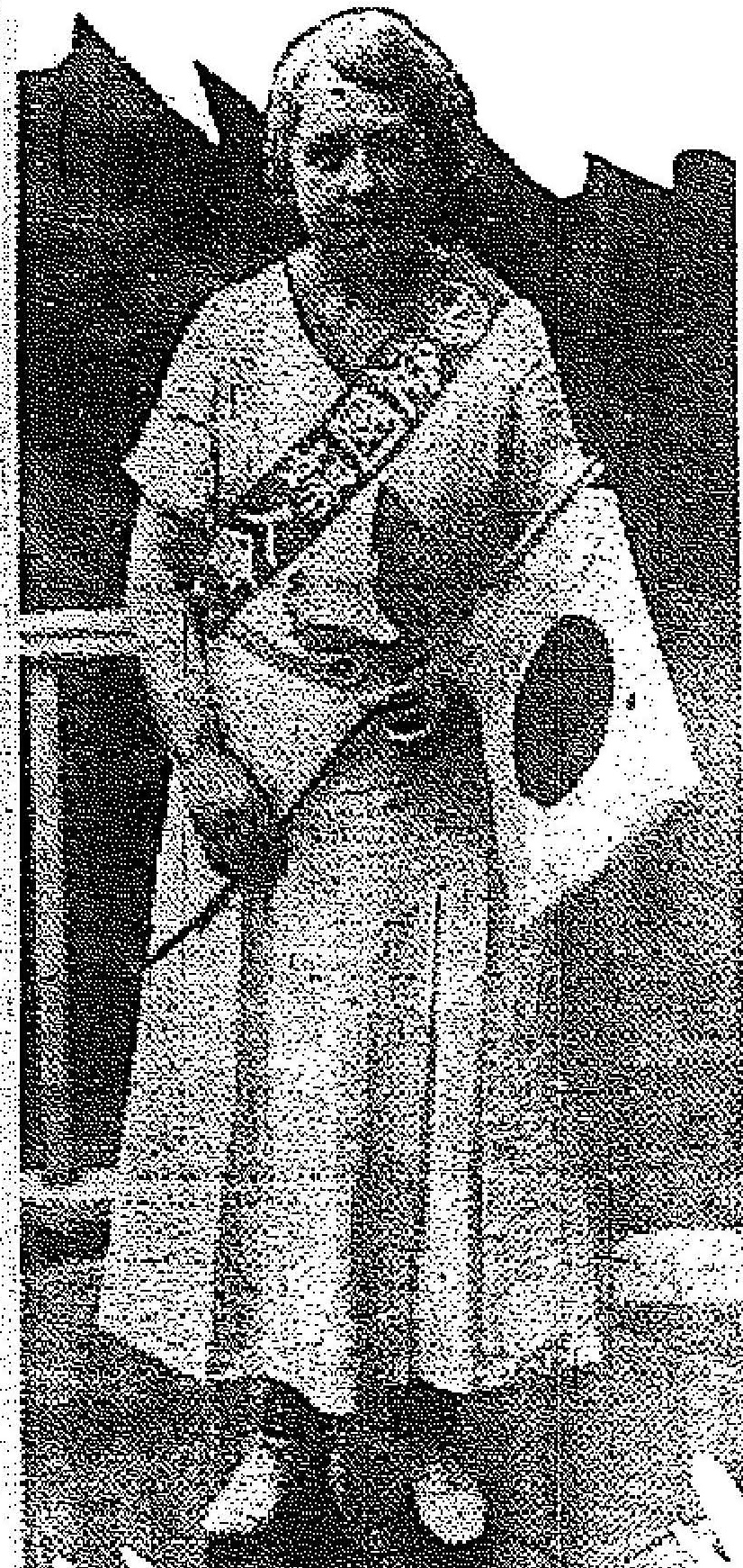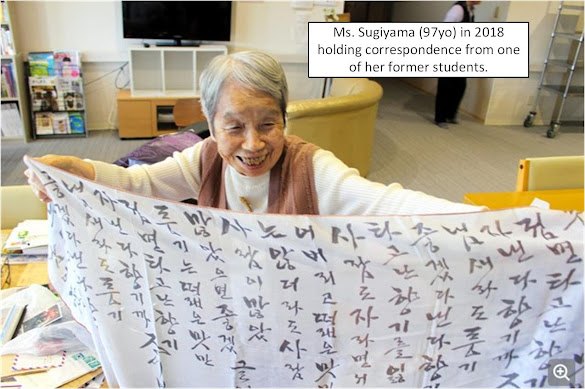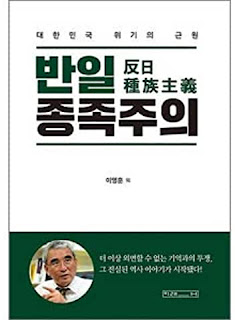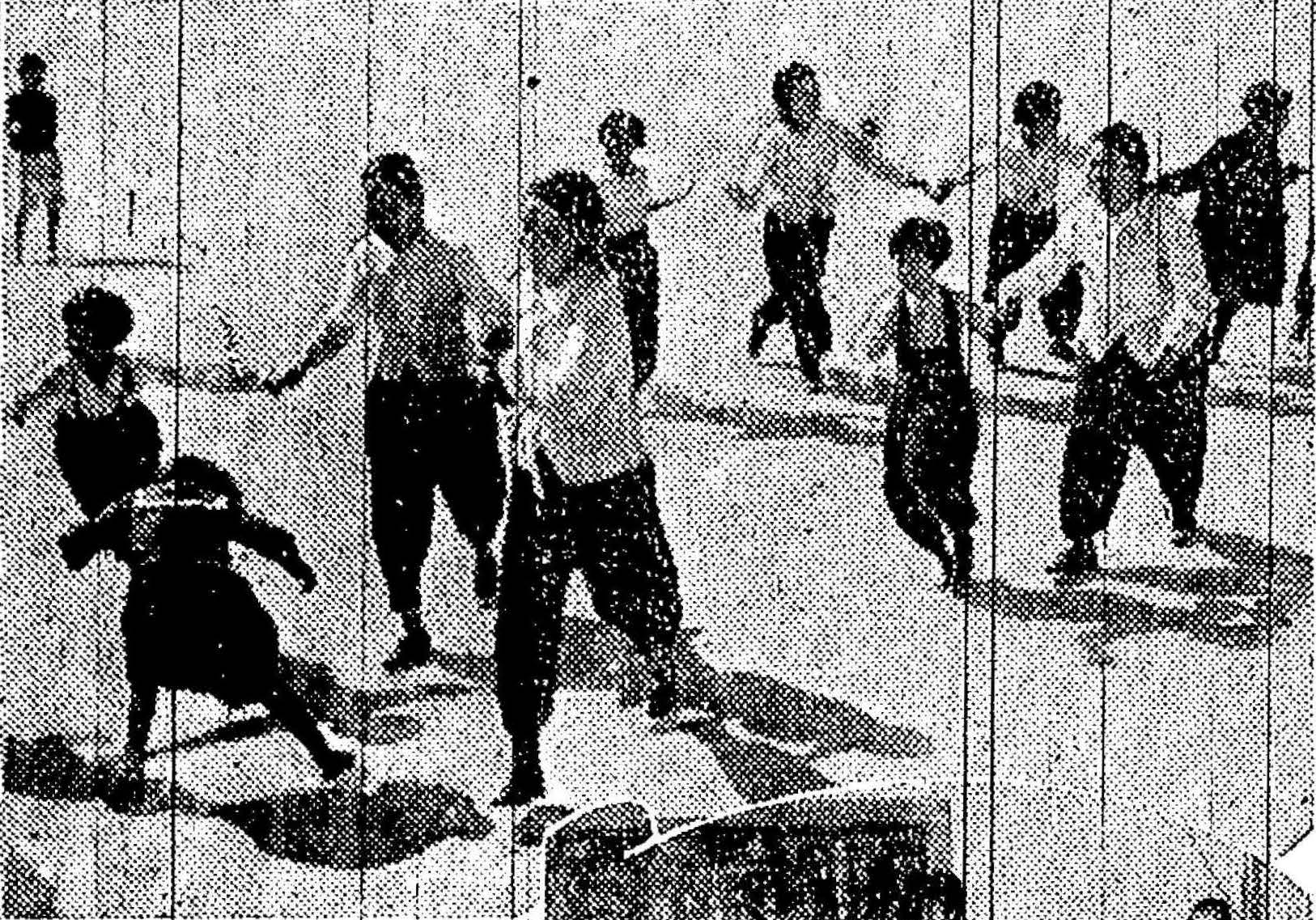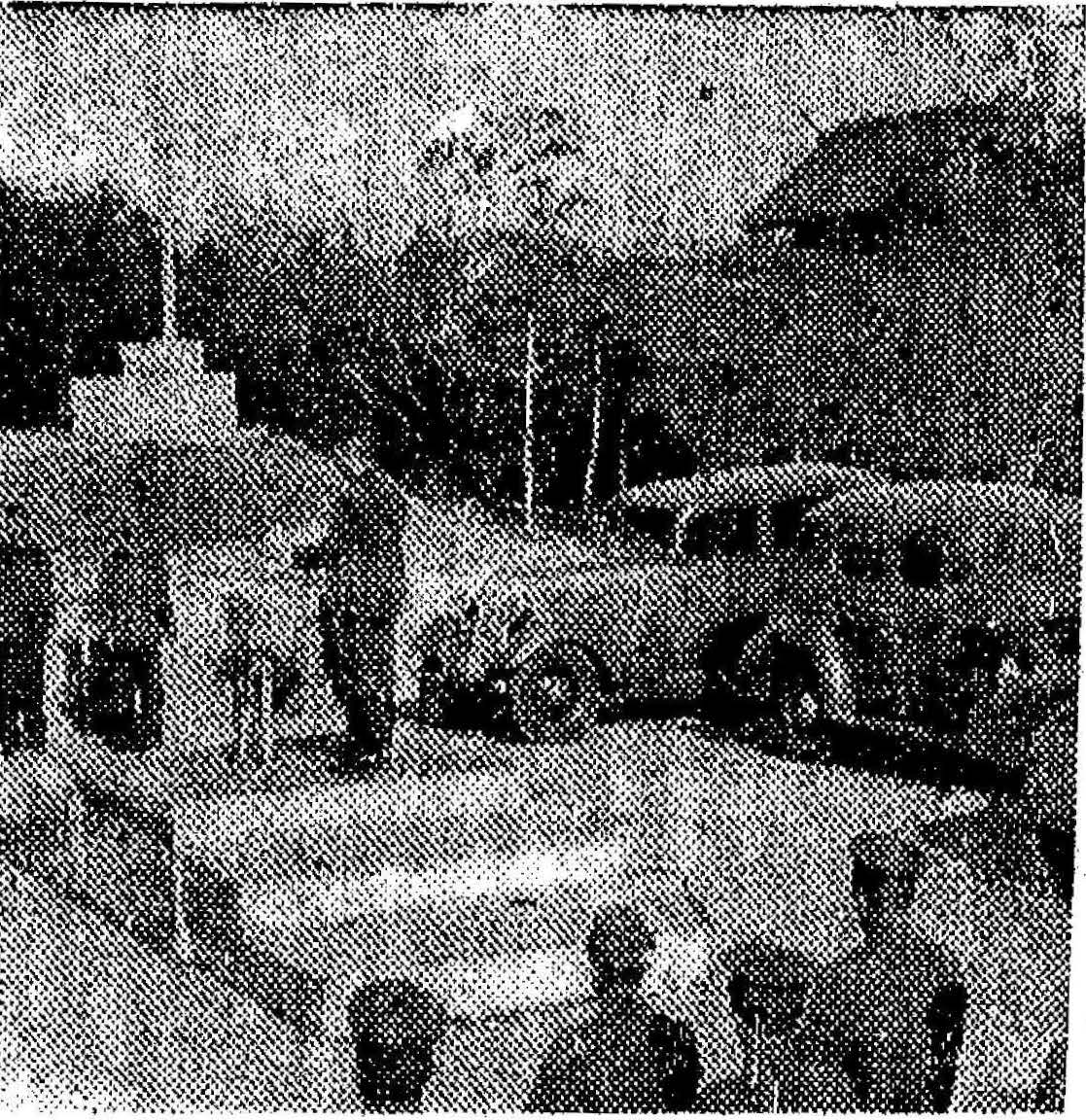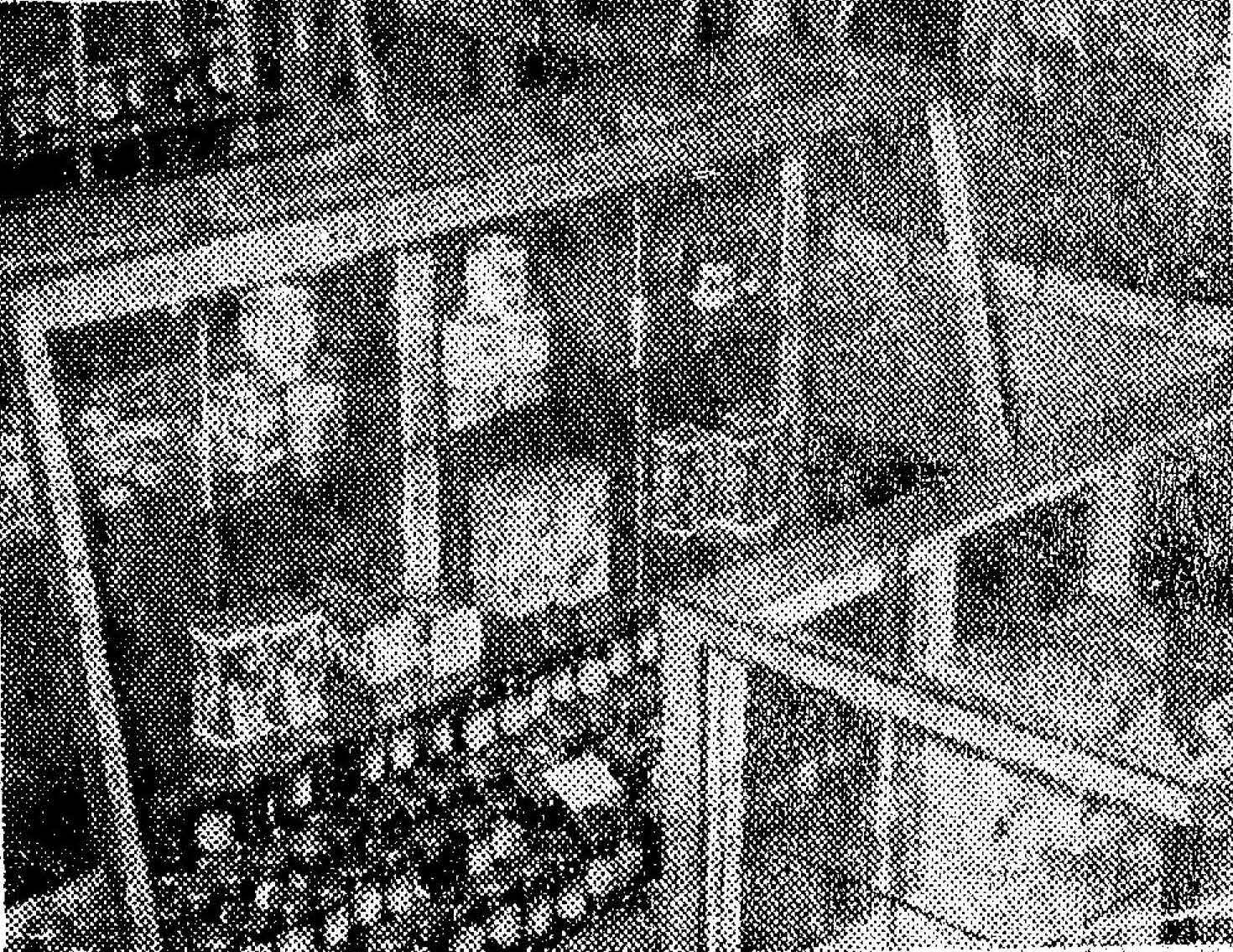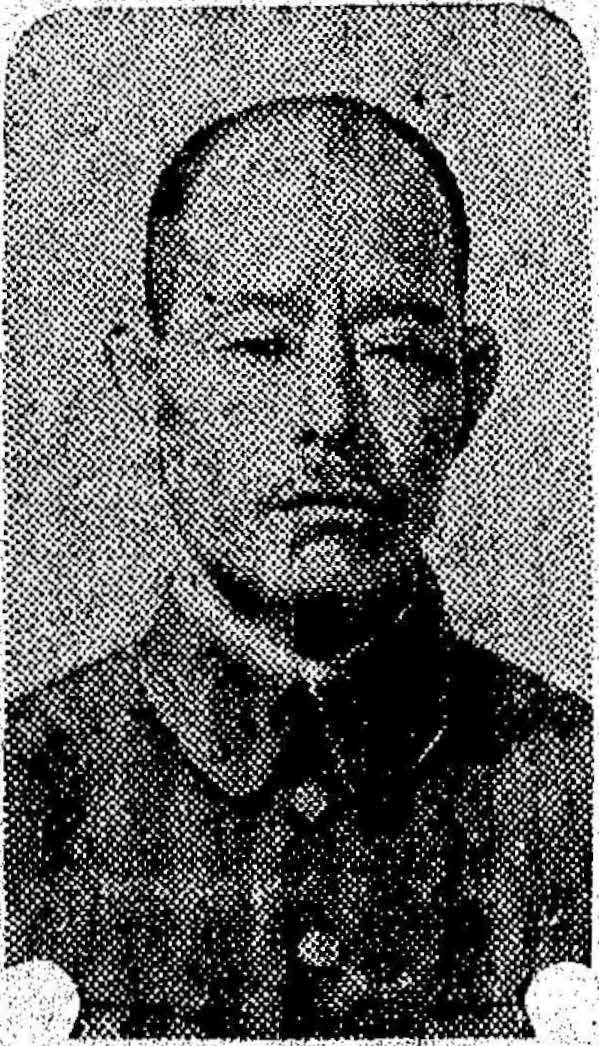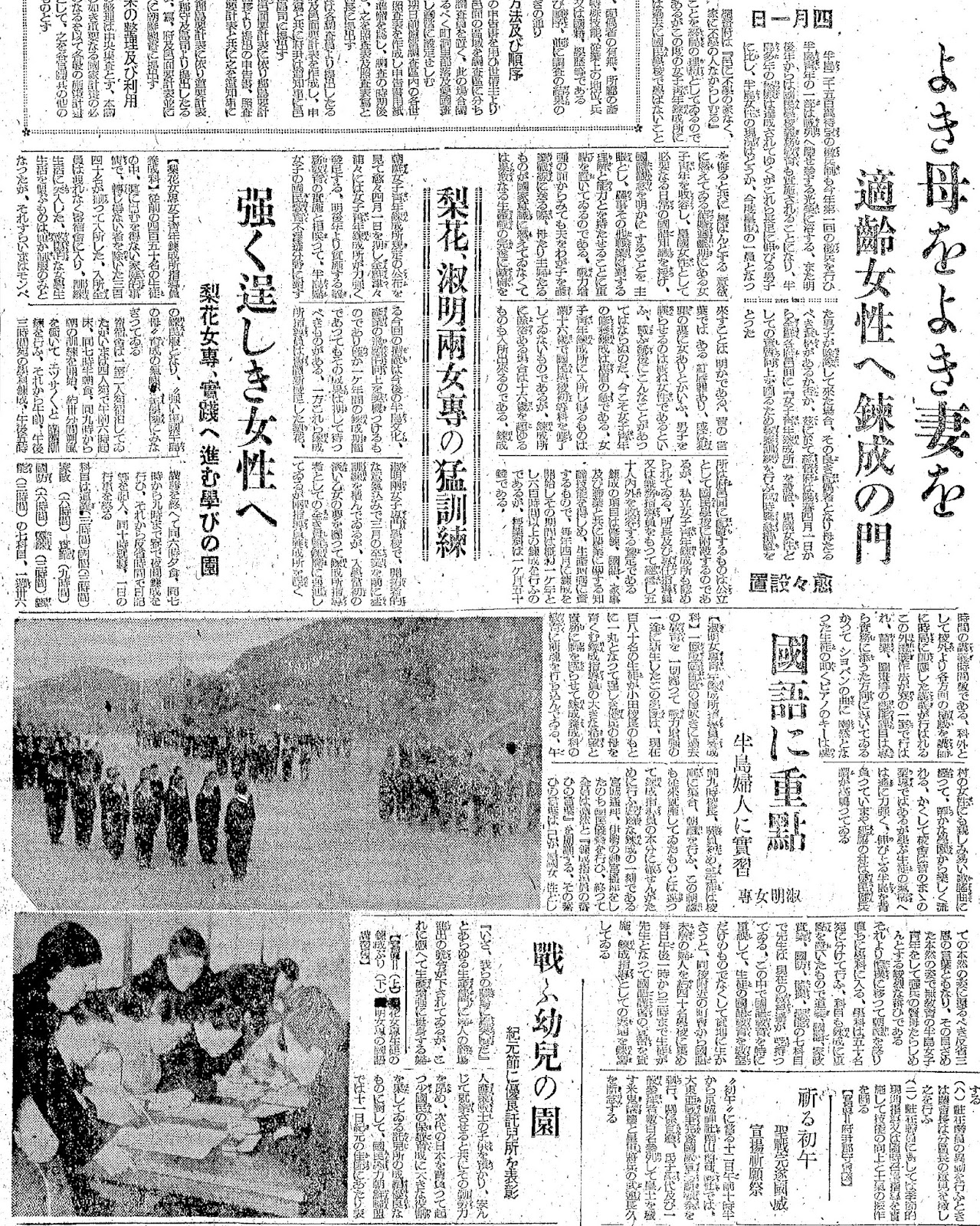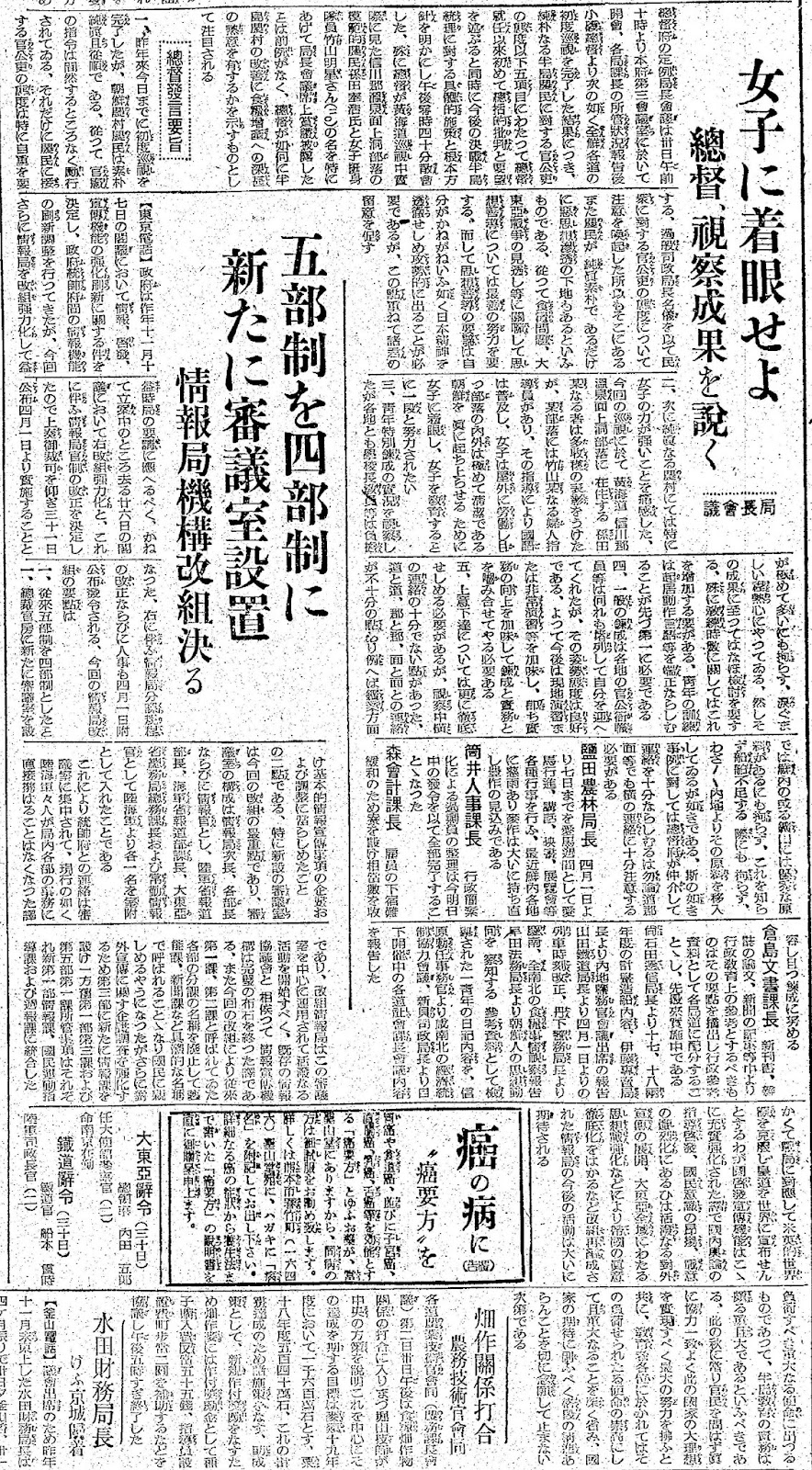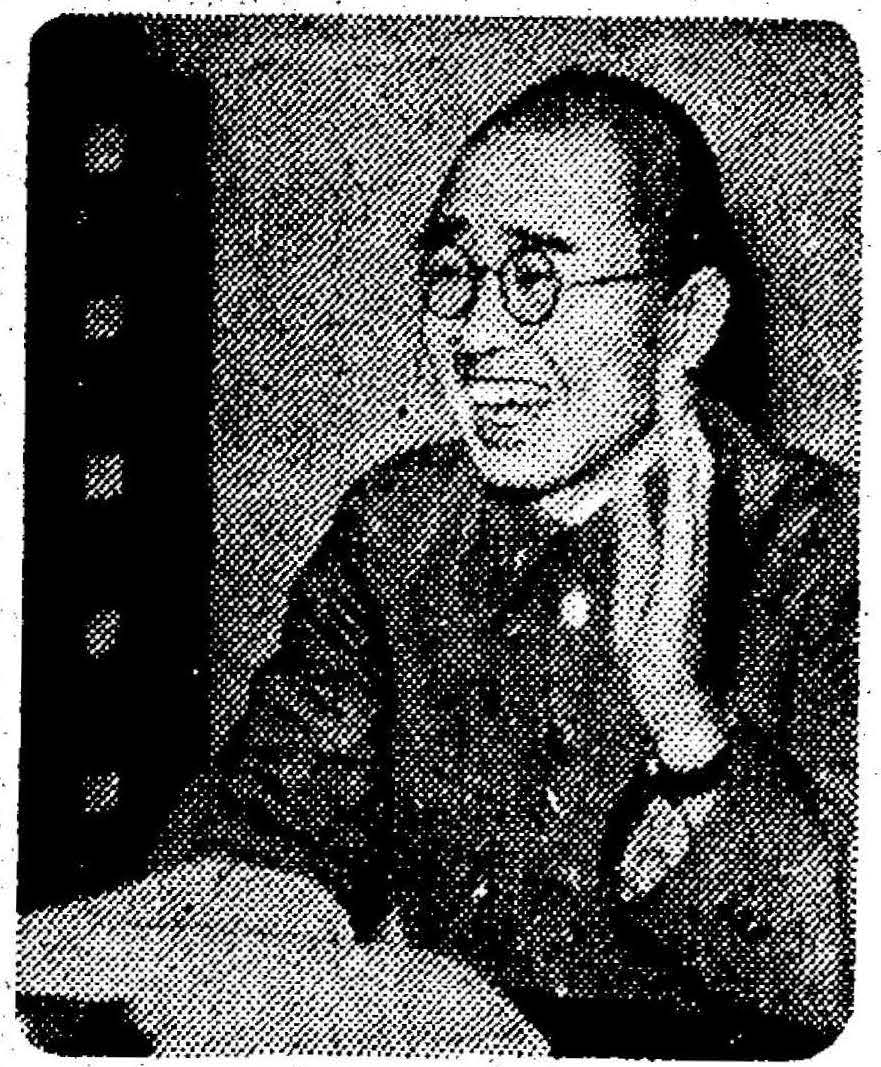
In February 1943, a massive network of Imperial Way Training Institutes was launched in Korea to initially train 500,000 Korean ‘leaders’ in ‘character building’ based on the ‘pure Japanese spirit and worldview’, but not in Japan proper because of the ‘high national character’ of the Japanese people
2023-02-09
509
2525
In February 1943, Governor-General Koiso issued an executive order creating a vast nationwide network of ‘Imperial Way Training Institutes’ that would initially train over 500,000 Korean ‘leaders’ (about 2% of the Korea population at the time) in the ‘pure Japanese spirit and Japanese worldview’ for ‘character building’ and ‘spiritual training’. Adopting the ‘Japanese spirit’ and ‘Japanese worldview’ would have not only meant adopting the Japanese language, culture, and national identity, but also converting to the State Shinto religion and submitting to the Japanese Emperor.
The second article features an interview with an exuberant Mr. Takeuchi, the colonial bureaucrat in charge of this vast network, who explained that mainland Japan did not need a similar program because the Japanese people already had a ‘high national character’, the implication being that the Korean people didn’t.
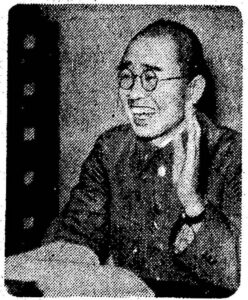
Mr. Takeuchi apparently drew some inspiration from a young farmers’ boot camp run by the Imperial Army in northern Japan. He probably also got some ideas from the ‘Yamato Cram Schools‘, which were founded in April 1941 to convert ideological criminals such as Korean independence activists.
This vast campaign to dilute Korean ethnic and national identity and mold the Korean people into loyal Imperial Japanese subjects is arguably one of the most ambitious social experiments ever attempted in the world in the 20th Century.
The ‘leaders’ were trained in four different programs: an elite government leader program, a workplace-based program, a school-based program, and a rural-based program. These programs established the pattern of workplaces, schools, and rural villages ‘volunteering’ laborers to work for the colonial government in detachments as labor shortages became critical over the course of the war.
The elite program was attended by Koreans who were already fluent in Japanese, so they studied advanced Shinto philosophy and Classical Japanese literature, presumably so that they could read the ancient Shinto scriptures in the original Old Japanese. The general idea was that the graduates of these programs would eventually train others and then create a ‘trickle-down’ effect of converting all of Korean society from the top-down. I have previously posted articles showcasing at least one example from each program, with the exception of the elite program, but this article connects the dots by revealing that they were all part of one big network of ‘Imperial Way Training Institutes’.
- Internment camps for young Korean schoolgirls
- Workplace training making employees run until they collapse from heat exhaustion
- Yuseong Farmers’ training camp to train rural leaders
(Translation)
Gyeongseong Ilbo (Keijo Nippo) February 2, 1943
Spiritual Training Guidelines Established for the Groundbreaking Korean Peninsula (Effective March 1st)
“Imperial Way Training Institutes” to be established
Four different training programs to be implemented
The Governor-General’s Office, in accordance with the aim of the New Year instructions given by Governor-General Koiso on January 4th at the opening ceremony of his administration, has instructed the leaders of the 24 million compatriots on the Korean peninsula, including government officials, executive staff at various private companies and organizations, male and female students attending junior high school and above, and young men with leadership potential, to thoroughly practice character building and spiritual training in accordance with the current decisive wartime system. These guidelines had been in the drafting stages for quite some time, but they were just recently finalized. On the first day of the month, the groundbreaking “Outline of Thorough Practice of Character Building and Spiritual Training” was announced along with Governor-General Koiso’s message as follows.
According to the outline, the “Imperial Way Training Institutes,” which will form the core of the various training institutes, will be newly established in Seoul to train leaders from all walks of life in the public and private sectors based on the pure Japanese spirit and Japanese worldview that the Governor-General has long advocated, enabling government officials and ordinary people from all of Korea to become leaders in providing character building and spiritual training. The training methods will be divided into four programs:
(1) Government leadership training program
(2) Workplace training program
(3) School training program
(4) Rural leadership training program
These programs are designed to train the mind and body to be strong and healthy enough to literally endure a bloody battle, by augmenting iron-like character building and spiritual training that are adapted to the trainees’ academic level, age, and personal qualities. The “Imperial Way Training Institutes” will start this April.
As for the workplace training program and school training program, every Monday will be designated as a “Training Day” starting on March 1st, and the training will be conducted simultaneously all over Korea in accordance with prescribed training methods. In addition, this unprecedented training, which also deserves to be called ‘battle training’, will include not only government officials and leaders of private companies and organizations as targets for mobilization, but also about 195,000 members of the police, security, and railway patrol agencies in all of Korea, about 50,000 male and female students from junior high school and above, about 2,500 people undergoing training at various training institutes or re-education institutes for government officials, about 97,000 students at youth training centers, and about 110,000 youth at special youth training schools. Altogether, the total number of trainees will be well over 500,000.
The thoroughness of these training methods is a clear embodiment of one of the three major policies that Governor-General Koiso has long declared. At the same time, it is now the autumn of the year when our nation is risking life and death valiantly fighting on in the Greater East Asia War. This is truly a decisive kind of training that is immediately adapted to the current decisive wartime system.
Outline for the thorough implementation of character building and spiritual training
(1) The Imperial Way Training Institutes are to be newly established by the Governor-General of Korea by this April, and the affairs related thereto shall be placed under the jurisdiction of the Training Division of the Scholastic Affairs Bureau. The Imperial Way Training Institutes shall clarify the Japanese spirit and the Japanese worldview, directly train leaders, and lead the character building and spiritual training of government officials and ordinary people in general.
(2) The training is divided into the following four training programs, and they will be implemented starting on March 1st.
1: Government leadership training program: includes government officials, private executives, and those who deserve to become executive staff in both the central and outlying areas of the country
2: Workplace training program: includes the groups which are specified elsewhere in other paragraphs.
3: School training program: includes those undergoing training at schools and school-like institutions as specified elsewhere in other paragraphs.
4: Rural leadership training program: includes leaders from rural areas.
(3) The following are the main features of each training program
A: Government leadership training program (a) Location = the dōjō attached to the Imperial Training Institute (an alternative dōjō can be arbitrarily chosen until the Imperial Training Institute is newly built) (b) Training period = an average of two weeks per term, and depending on the trainees, it may be as short as one week or as long as one month (c) Training method = The trainees are required to stay under strict discipline. Taking into account the trainees and the length of their training period, they are required to take classes on the National Body, Classical Japanese literature, and the Japanese worldview as appropriate. They are also required to perform Seiza, Misogi, as well as martial arts training, calisthenics, and manual labor. (d) The actual cost of the meals provided at the executive leadership training dōjōs shall be deducted from the trainees’ travel allowances.
B. Workplace training program: (a) Training days shall be scheduled every Monday throughout the year for all of Korea. However, if the training day falls on a holiday, or if training cannot be due to rain or other circumstances, then the training shall be postponed (b) Training shall be held 30 minutes to 1.5 hours before the start of work for government offices, public organizations, companies, banks, and various trade union offices. The training start time for factories, mines, and labor sites shall be set at an appropriate time as determined by their respective leaders. The following activities shall be performed: (1) National Worship Ritual (2) Calisthenic exercises and drills. Depending on the occasion, these may be replaced with character building talks, manual labor, and other activities. Girls shall be allowed to participate in the above events by performing the girls’ ritual and learning how to use the Naginata sword. The police, security, and railway patrol agencies shall assemble on training day as much as possible, and generally perform the same activities.
C. School training program: In schools (including girls’ schools), the appropriate time and day shall be set and activities shall be conducted in the same manner as in the workplace training program. However, the character building talks and the labor tasks, which are the mainstay for the training of government officials, shall be adapted in accordance with the age of the trainees. The activities performed on training day may derive from the workplace training program or the government leadership training program, and the training shall always be conducted in accordance with the trainees’ personal qualities.
D. Rural leadership training program: At the training dōjōs in the rural areas, training shall be conducted in accordance with the government leadership training program.
The following shall receive training in accordance with the workplace training program:
(A) Employees at the following government agencies and public organizations: (1) Governor-General’s Office (including quasi-governmental agencies), provincial governments, prefectural governments, county governments, island governments, police stations, eup offices, etc. (2) Provincial telecommunications agencies, savings management offices, main post offices, etc. (3) Provincial railway agencies, railroad offices, main rail stations, track maintenance districts, railway management districts, factories, etc. (4) Provincial monopoly agencies, main monopoly agency branches, factories, etc. (5) Customs Bureau and main customs branches, etc. (6) Tax supervision bureaus and taxation offices, etc. (7) Courts, prosecutors’ offices, court branch offices, prosecutors’ sub-offices, probation offices, prisons, etc. (8) Forestry offices (9) Branch offices of government agencies, inspection stations, and examination centers, etc. (10) Hospitals attached to provincial medical schools, etc. (11) Other government agencies and public organizations that are required to conduct spiritual training
(2) Police, security forces, and members of the railway patrol agencies: approximately 195,000 people
(3) Employees of major companies, banks, various trade unions, factories, mines, and other workplaces, etc. (Workers should also be spiritually trained as much as possible in a manner that is in accordance with their occupation)
The following shall receive training in accordance with the school training program:
(1) Students from junior high school and above: about 50,000 students
(2) Those undergoing training at the various training institutions for government officials, etc., as listed in the attached table, or those undergoing re-education as government officials: about 2,500 persons
(3) Students at youth training centers: about 97,000
(4) Students at special youth training centers: about 110,000
(5) Those who are enrolled at various training institutes such as farmers’ training institutes, etc.
Source: https://www.archive.org/details/kjnp-1943-02-02
Gyeongseong Ilbo (Keijo Nippo) February 3, 1943
Training days are every Monday
The Establishment of the Imperial Training Institutes as explained by Mr. Takeuchi, Director of the Training Division of the Scholastic Affairs Bureau
At the opening ceremony of Governor-General Koiso’s administration in the very beginning of 1943, when 24 million people on the Korean peninsula had risen up with iron determination, Governor-General Koiso raised up the three major principles of “thorough practice of character-building and training, decisive increase in production capacity, and epoch-making reform of general administration”. He requested strong executive power under the banner, “Practice is better than theory!” Not long after the New Year, he announced the “Outline of Thorough Practice of Character Building and Spiritual Training”. After a one-month preparation period, it will be to be put into practice as early as March 1 with great pomp.
The Imperial Way Training Institutes, the most organized government-run training dōjōs in Korea, are to be established ahead of other training dōjōs in mainland Japan, because iron-solid mental strength and power of execution should be the main road to complete victory in this decisive war. They are intended to give the people of the Korean peninsula (government officials, ordinary people, and students alike) the mental strength and power of execution made of indestructible diamond to fight through the Holy War of the Century. Mr. Takeuchi is busy right now with various preparations for the training programs, but let’s listen to him talk about training the Korean peninsula.
Mr. Takeuchi, Director of the Training Division of the Scholastic Affairs Bureau
There are already dōjōs and training centers for various occupational groups throughout the country, but Korea will probably be the first country to have government-run dōjōs in every region of the country. It is said that the various programs of the Imperial Way Training Institutes were added by Director-General Eguchi after consulting with the Governor-General. Although spiritual training should naturally be conducted in mainland Japan as well, it is harder to organize from a geographical standpoint, and the Japanese people have a high national character. That is probably why we don’t adopt such large-scale training programs in mainland Japan.
Training can be roughly divided into three main programs: the training of leaders, the training at workplaces, and the training at schools. The term ‘rural leaders’ refers to section chiefs, county governors, police stations, directors of financial institutions, school principals, etc. in each province. Training will begin at the same time in each area of the country and will continue nonstop throughout the year for many years. Those students who have been trained at the schools will graduate and undergo training in their respective occupational fields, and then become local leaders and undergo training at the Imperial Way Training Institutes.
The details have not yet been announced, but starting in March, every Monday will be designated as a training day, and there is really nothing difficult about it. All you have to do is to come to work an hour or 30 minutes early on that day, do some calisthenic training, physical exercises, listen to a character building talk, and do some manual labor. Not all of them are required to enter a dōjō to perform Misogi. There seems to be a misunderstanding on this point.
There are many people who are suspicious of entering a training dōjō. Everyone nowadays knows the gravity of the times. They know that they have to work hard. However, if you enter a training dōjō and continue a rigorous mental regimen for even one week, you will achieve an iron determination. Then you will feel the pleasure of putting things into practice without complaint. You will be inspired. That might be all there is to it. The other day, I visited the Rokuhara Farmers dōjō (Iwate prefecture, Japan), which strictly enforced the National Worship Ritual, the raising of the national flag, and proper eating habits, but the rest was just field work. However, when I saw those who were doing the work, I found that they had an incorruptible mentality. I believe that this spiritual life makes the can-do attitude penetrate strongly and deeply into one’s heart and soul.
Source: https://www.archive.org/details/kjnp-1943-02-03
(Transcription)
京城日報 1943年2月2日
画期的半島の錬成要項成る 三月一日開始
『皇道修練院』を設置
四錬成型に分類実施
総督府では去月四日小磯総督が本府の御用始式においてなしたる初訓示の趣旨に則り、現下の決戦体制に即応して、全鮮の官公吏を初め、あらゆる民間会社、各種団体等の職員幹部、男女中等学校以上の学生、生徒など半島二千四百万同胞の指導者並びに中堅たるべき青壮年層に対し修養錬成の徹底的実践をなすべく、過般来立案中のところ、このほど具体案を決定。一日これに関する小磯総督談話と共に画期的な『修養錬成の徹底的実践要綱』を次の如く発表した。
要綱によれば各種錬成機関の中心たる『皇道修練院』を京城府に新たに開設して総督がかねて高唱する醇乎たる日本精神及び日本的世界観の透徹を基調として官民各界指導者の錬成を行い、かつ全鮮官民全般にわたる修養錬成を指導せしむると同時に他方錬成方法を
(一)指導者錬成
(二)職域錬成
(三)学校等の錬成
(四)地方指導者の錬成
なる四つの錬成型に分ち、被錬成者の学識、年齢、素質等に応じて鉄の如き修養錬成を加え、以って文字通り血の決戦にも堪え得る強健なる心身を鍛え上げんとするもので、『皇道修練院』は来る四月より開始。
職域錬成及び学校等の錬成については三月一日より毎週月曜日を『錬成日』と定め、所定の錬成方法に基づいて全鮮一斉に実施することとなっている。なお対戦錬成ととも云うべきこの未曾有の錬成に動員さるべき対象は官公吏、民間会社団体指導者などの外、全鮮の警防団員、鉄道愛護団員約十九万五千人、中等学校以上の男女学生、生徒約五万人、各種官公吏養成機関又は官吏再教機関に於いて修業中の者約二千五百人、青年訓練所生徒約九万七千人、青年特別錬成所生約十一万人等を加うれば、優に五十万人を超ゆべく其の規模。
其の錬成の徹底的方式に於いて小磯総督がかねて宣明せる三大施策の一を端的に具現せるものであり、それと同時に我国が生死存亡を賭して今や雄渾なる大東亜戦を戦い抜きつつある秋。正に半島の決戦体制に即応する決戦的錬成というべきである。
修養錬成の徹底的実践要綱
(一)朝鮮総督府に皇道修練院を新設(四月)し、之に関する事務を学務局錬成課の所管とす。皇道修練院は日本精神及び日本的世界観を究明し、直接指導者の錬成を行うと共に官民全般に亘る修養錬成を指導す。
(二)錬成を左の四に区分し、三月一日より之を実施す。
1:指導者錬成 中央及び地方を通じ官公吏及び民間の幹部並びに幹部たるべき者を対象とす。
2:職域錬成 別項の如き集団を対象とす。
3:学校等の錬成 別項の如き学校及び学校類似の機関に於いて修業中の者を対象とす。
4:地方指導者錬成 地方の指導者を対象とす。
(三)錬成の実施要目左の如し
1:指導者錬成 (イ)錬成の場所=皇道修練院付設道場(皇道修練院新設迄は適宜選定の道場) (ロ)錬成期間=一期平均二週間とし被錬成者に依り一週間乃至一月間に於いて適宜之を定むるものとす (ハ)錬成の方法=厳格なる規律の下に起居せしめ被錬成者と錬成期間の長短を考慮し適宜国体学、古典、日本的世界観等を講習せしむると共に静座、『みそぎ』等の行い及び武道教練、体操、勤労作業を併課す (二)経営、指導者錬成道場に於ける食費等は被錬成者の旅費手当中より実費を負担せしむ。
2:職域錬成 (イ)錬成日の設定全鮮を通じ毎週月曜日を錬成日と定む。但し当日休日なるとき又は雨天等の為め予定の行事を実施難きときは順延とす (ロ)錬成の日の行事、官公署、公共団体、会社、銀行、各種組合事務所等に在りては出勤定刻前三十分乃至一時間半、工場、鉱山、事業場等に在りては指導者の定むる適宜の時限及び時分に於いて厳格なる規律の下に概ね次の行事を行う:(一)国民儀礼 (二)体操及び教練、時宜に依り訓話、勤労作業其の他の行事を以て之に代う。右の行事には女子を参加せしめ女子儀礼及び薙刀の習得等を以て男子の教練に代うことを得、警防団、鉄道愛護国は能う限り之を錬成日に召集し概ね同一の行事を行うものとす。
3:学校等の錬成 学校(女子を含む)に在りては職域錬成に関し定めたる錬成日に於いて適宜の時限及び時分を定め職域錬成に準じ行事を行うものとす。但し訓話又は勤労作業を主とすべし官吏等の養成機関及び之に準ずるものに在りては修業者の年齢に応じ、錬成日に於ける行事を前項学校等の錬成又は職域錬成方法に拠らしむるの外、指導者錬成に於ける『錬成の方法』を参酌し被錬成者の素質に応じ常時之に適応したる錬成を行うものとす。
4:地方指導者 地方錬成道場に於いて1の指導者錬成に準じ之を行う。
職域錬成を受くべき者
一、左の如き官公署及び公共団体の職員 (一)総督府(含外局)、道庁、府郡島庁、警察署、邑事務所等 (二)地方逓信局、貯金管理所、主なる郵便局等 (三)地方鉄道局、鉄道事務所、主なる駅、保線区、機関区及び工場等 (四)地方専売局、主なる専売局出張所及び工場等 (五)税関及び主なる税関出張所等 (六)税務監督局及び税務署等 (七)法院、検事局、法院支庁、検事分局、保護観察所及び刑務所等 (八)営林署 (九)官庁各種出張所、検査所及び試験場等 (十)道立医院学校附属病院等 (十一)其の他錬成を行うことを要する認むる官公署、公共団体等
二、警防団員、鉄道愛護団員、約十九万五千人
三、主なる会社、銀行、各種組合、工場、鉱山、及び事業場等の職員(労務者に対しても成るべく職員に準じ錬成を行うこと)
学校等の錬成を受くべき者
一、中等学校以上の学生、生徒、約五万人
二、別表の如き各種の官吏等の養成機関又は官吏再教育機関に於いて修業中の者、約二千五百人
三、青年訓練所生徒約九万七千人
四、青年特別錬成所生約十一万人
五、農民訓練所等各種訓練所に入所中の者
京城日報 1943年2月3日
錬成日は毎週月曜
皇道修練院の設置 竹内錬成課長談
半島二千四百万が鉄の決意をもって起ち上った十八年初頭の御用始式において小磯総督は『修養錬成の徹底的実践』、生産力の拡充、庶政執務の刷新の三大綱領を掲げ、”理念より実践へ”の旗幟も高らかに逞しい実行力を要望したが、新年度を待たずしてまず”修養錬成の徹底的実践要綱”を発表。一ヶ月の準備期間を置いて三月一日から早くも歩武堂々と実践に移すこととなった。
鉄石の精神力と実行力こそ決戦完勝への大道であらねばならない、と内地に先んじて最も組織的な官営修練道場『皇道修練院』を設置。半島官民学徒を問わず、この世紀の聖戦を戦い抜く金剛不壊の精神力、実践力を与えようとするものだが、錬成方法の諸準備に忙しい竹内錬成課長に半島を錬成する弁を聞いてみよう。
語る竹内錬成課長
各職域別による道場とか錬成所などは全国至る所にあるが全地域的な官営の道場を持つのは凡らく朝鮮が始めてだろう。皇道修練院の各種は江口総務局長が総督に相談されて付けたと聞いている。内地でも当然錬成を行なうべきだが、地域上からみてまとまりが悪いのと民度の高さからいってこうした大規模な錬成方法を採らないのであろう。
錬成は大体指導者錬成、職域錬成、学校等の錬成に三大別出来る。ここでいう地方指導者とは各道の課長級、郡守、署所、金組理事、学校長などを称する。錬成は各地とも一斉に開始し、年中無休で今後幾年でもやってゆく。早い話が学校で錬成された者は卒業して職域別の錬成を受け、更に地方指導者となって皇道修練院で錬成を受けるわけだ。
まだ実施細目を発表していないが、三月からは毎週月曜日を錬成日と定めて実践するが、別段難しいことはない。その日は一時間か三十分早目に出勤して教練とか体操とか時には訓話を聞くとか勤労作業を行うとかでよいわけだ。全部が全部道場に入って『みそぎ』を行うものだとは限らない。この点どうも誤解があるようだ。
錬成道場に入ることを不審がる人がよくある。今時の人なら誰しも時局の重大さを知っている。頑張らねばならぬことも知っている。然し錬成道場に入って厳しい精神生活を仮令一週間でも続ければ鉄の決意が出来る。それから文句なしに実践することの快味を覚える。発奮して来る。要するにそれだけかも知れない。過日、六原農民道場を観たが国民儀礼国旗掲揚、食事作法を厳重にして、その他は野良仕事だけだった。然しやっている人を見ると実に冒し難い精神力を持っているのだ。この精神生活によって”やらねばならぬ””実行だ”ということが強く深く心魂に徹するのだと信ずる。
